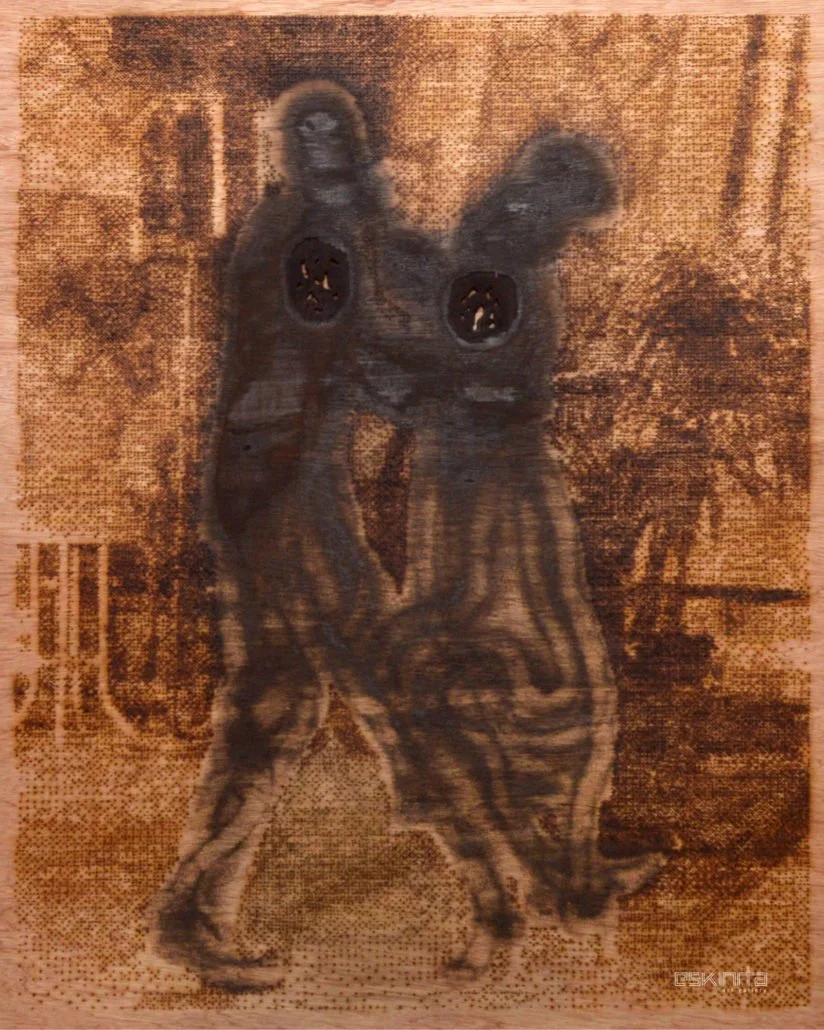
Anemoia
Leonardo Onia
February 10 to 26, 2018
Thirteen Ways of Looking at Anemoia by Leonardo Onia, Jr.
By Carlomar Arcangel Daoana
1.In the Dictionary of Obscure Sorrows, “anemoia” is described as “nostalgia for a time you’ve never known.” As a collection of works in a gallery, Anemoia is an exhibition that allows the viewer to enter a space of recollection, recalling places he has never seen and a time in which he has never lived.
2.The wood of the support remembers the house that it will never be; the fire does not remember the ink it has become.
3.The soundscape is a collection of bits and pieces the viewer has heard before but, organized this way, it has transformed into new music one will never hear the same way again.
4.Anemoia stitches sound and scenes together into a narrative at once fictional and true-to-life. People are a collection of such narratives.
5.Each work is a methodical process of burning points of fire into the wood: the artist as arsonist.
6.Each work is an imprint of the past of someone else’s that slips through the cracks of the present of the viewer.
7.The human figures in the works are underscored only by absence, the only part of the wood that has been spared by fire. This is the space which a viewer can occupy.
8.The landscapes are created paradoxically by burning the wood of the support, which has come from an actual tree.
9.While one may see this process from Onia’s Microscopic Hysteria, which was shortlisted at the Ateneo Art Awards last year, what has remained consistent is only the artist’s hand holding a pyrographic pen.
10.The color of the wood is a natural sepia.
11.Every burned thing is a document of its own vanishing, written in the language of carbon.
12.Carbon is one of the most abundant elements in the universe.
13.An average human body has 21.6 pounds of carbon. We have, each of us, the element for our own combustion.








